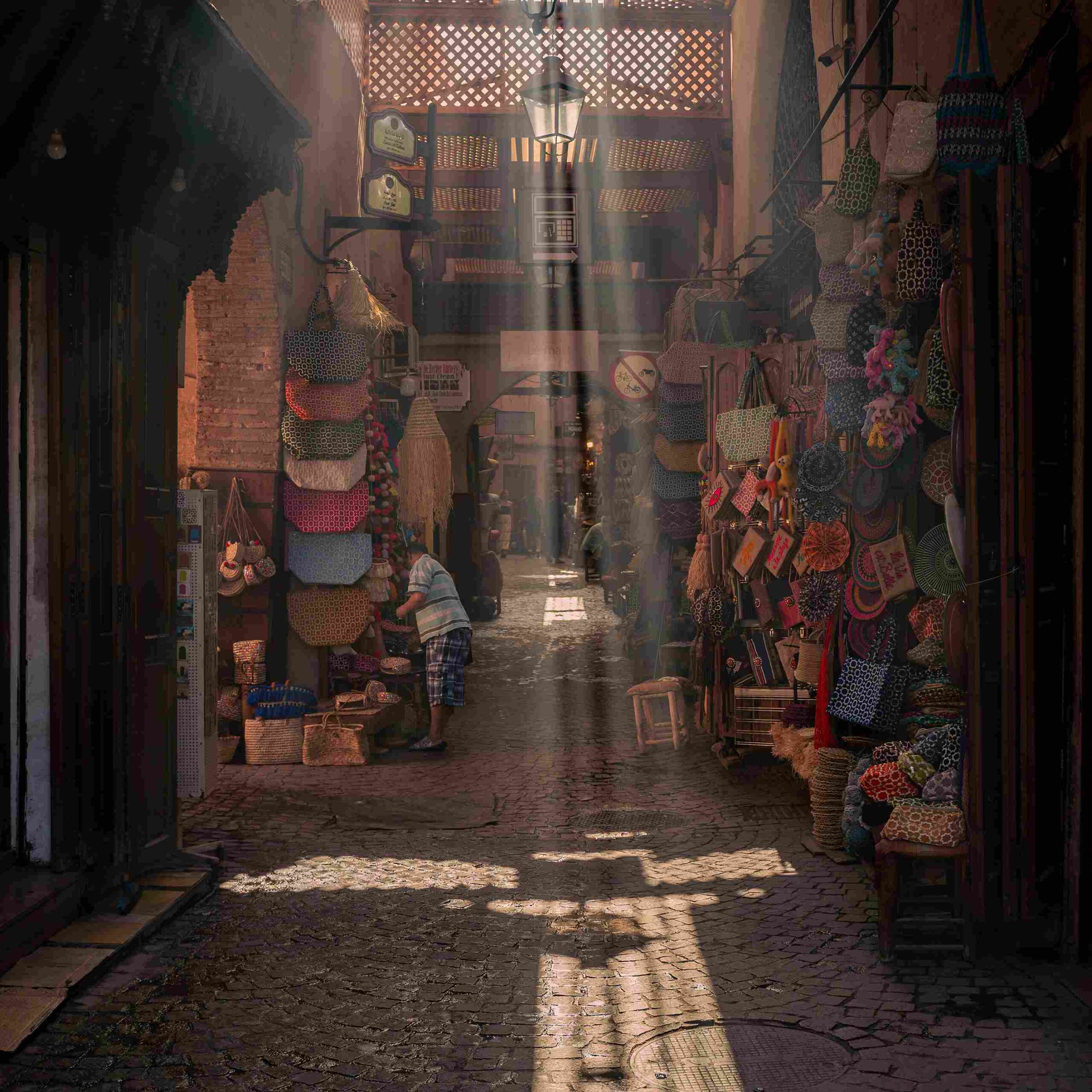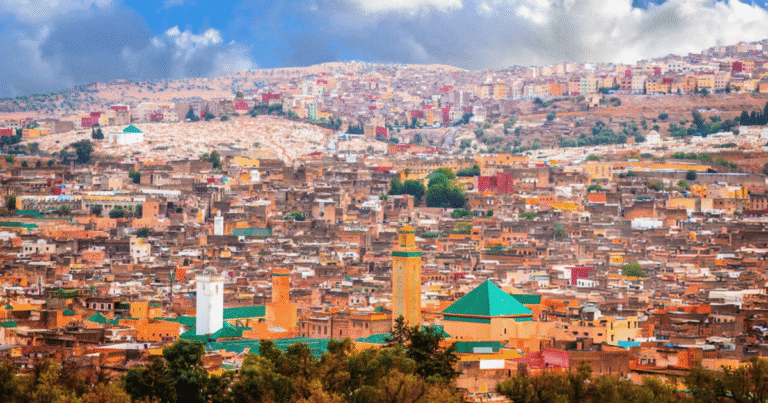Amazing experiences in marrakech 7
Embarking on a journey to Marrakech is like stepping into a vibrant tapestry of colors, sounds, and aromas. This enchanting city promises an unforgettable experience, blending traditional Moroccan culture with modern allure. As a first-timer, you’re about to immerse yourself in the bustling souks, savor local delicacies, and marvel at the architectural wonders.
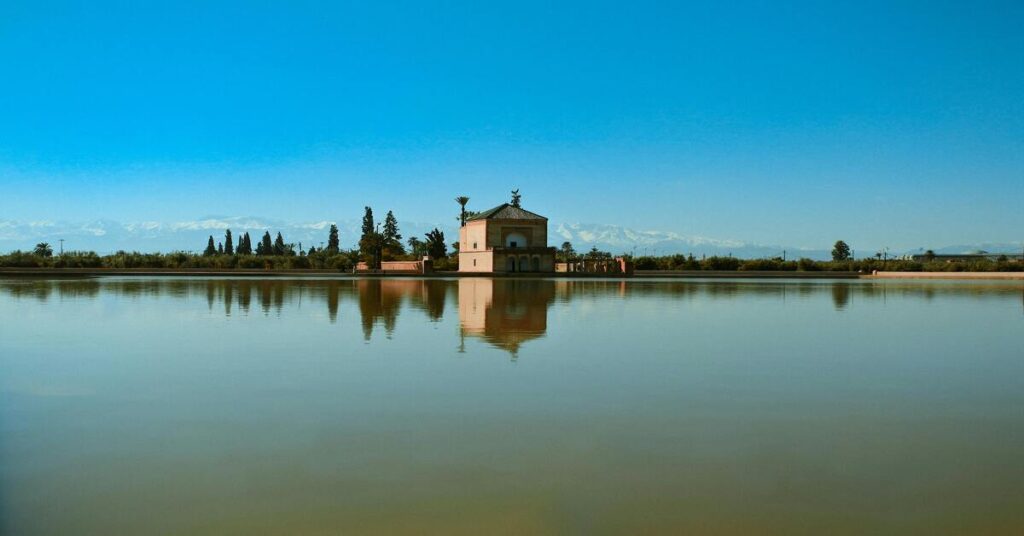
The city’s rich heritage is palpable as you wander through its historic medina, exploring the narrow alleys and discovering hidden gems. With this guide, you’ll be well-equipped to navigate the city’s treasures, from the bustling Jemaa el-Fnaa square to the serene Majorelle Garden.
Key Takeaways
- Explore the vibrant souks and markets
- Discover the city’s rich cultural heritage
- Visit iconic landmarks like Jemaa el-Fnaa
- Indulge in local cuisine and flavors
- Relax in the serene Majorelle Garden
Marrakech: An Enchanting Travel Guide for First-Time Visitors
Marrakech, with its labyrinthine medina and bustling souks, is a city that seamlessly blends ancient traditions with contemporary charm. This vibrant destination is a must-visit for any traveler looking to immerse themselves in Moroccan culture.
What Makes Marrakech Special
Marrakech is renowned for its rich history, cultural significance, and architectural beauty. The city’s unique blend of Arab, Berber, and French influences is reflected in its stunning monuments, bustling markets, and warm hospitality.
Brief History and Cultural Significance
Marrakech has a storied past, dating back to the 11th century. The city has been ruled by various dynasties, each leaving their mark on its architecture, art, and culture. This rich heritage is evident in landmarks such as the Koutoubia Mosque and the Bahia Palace.
Overview of the City’s Districts
Marrakech is divided into several distinct districts, each with its own character. The Medina, a UNESCO World Heritage Site, is the historic heart of the city, featuring narrow alleys, bustling souks, and iconic landmarks. The Palmeraie, a tranquil oasis, offers a serene escape from the city’s hustle and bustle. Gueliz, the modern city center, is known for its upscale amenities, boutiques, and restaurants.
Understanding the layout of Marrakech’s districts is essential for first-time visitors to navigate the city effectively and make the most of their stay.
When to Visit: Navigating Marrakech’s Seasons
Marrakech, a city of vibrant colors and rich history, is a destination that beckons travelers year-round, but timing your visit right can make all the difference. The city’s climate, tourist seasons, and cultural events all play a role in shaping your Marrakech experience.
Peak Season vs. Off-Season
Marrakech’s peak tourist season, which runs from October to April, offers pleasant weather and a lively atmosphere, with numerous cultural events and festivals taking place. However, this period also attracts large crowds and higher prices for accommodations and tourist services. In contrast, the off-season, which spans from May to September, is characterized by hotter temperatures and fewer tourists, making it an ideal time for those seeking a more relaxed experience and lower prices.
Weather Considerations
Marrakech’s climate is generally warm and sunny, but temperatures can fluctuate significantly between day and night, especially during the winter months. Visitors should be prepared for hot summers with temperatures often reaching above 38°C (100°F) and mild winters with temperatures sometimes dropping to around 5°C (41°F) at night.
Festival Calendar and Cultural Events
Marrakech hosts a variety of cultural events and festivals throughout the year, including the Marrakech International Film Festival and the Marrakech Popular Arts Festival. These events not only showcase the city’s rich cultural heritage but also provide visitors with a unique and immersive experience. Planning your visit around these events can add an extra layer of enjoyment to your trip.
By considering these factors, you can plan your trip to Marrakech at the best time for your preferences and budget, ensuring a memorable and enjoyable experience in this vibrant city.
Planning Your Journey to the Red City
Before you embark on your journey to the Red City, there are several key factors to consider to ensure a smooth and enjoyable trip.
Flight Options from the UK
Marrakech is easily accessible from the UK, with several airlines offering direct flights to Marrakech Menara Airport. You can choose from a variety of airlines, including EasyJet, British Airways, and Jet2, depending on your budget and preferred travel dates.
Book your flight to Fes now at the best prices using this 👉 link
Visa Requirements and Entry Procedures
For UK citizens, a visa is not required for stays up to 90 days within a 180-day period. However, your passport must be valid for at least six months beyond your planned departure date from Morocco. Ensure you check the latest entry requirements before your trip.
Currency and Budget Planning
The local currency is the Moroccan Dirham (MAD). While credit cards are widely accepted in Marrakech, it’s a good idea to have some local currency for smaller purchases and when venturing into the medina. Budgeting for your trip should include accommodation, food, transportation, and activities. A daily budget of around £30-£50 per person can cover meals, local transport, and entry fees to most attractions.
Travel Insurance and Health Considerations
Travel insurance is highly recommended to cover unexpected medical or travel-related expenses. Morocco requires visitors to have valid travel insurance that covers medical expenses. Additionally, ensure your routine vaccinations are up to date and consider any necessary medications for travel to Morocco.
By considering these factors, you can enjoy a well-planned trip to Marrakech, immersing yourself in the city’s vibrant culture and rich history.
Where to Stay: Accommodation Options for Every Budget
Marrakech’s accommodation scene is as vibrant as the city itself, with options for all budgets. Whether you’re looking to immerse yourself in the traditional architecture of the Medina or prefer the luxury of a modern resort, Marrakech has something to offer.
Authentic Riads in the Medina
The historic Medina is home to many traditional riads, offering an authentic Marrakech experience. These riads are typically restored houses with beautiful interiors, often featuring riad-style architecture with interior gardens. Staying in a riad allows you to experience the local culture and hospitality.
Key benefits of staying in a riad include:
- Immersive cultural experience
- Beautiful traditional architecture
- Personalized service
Luxury Resorts in the Palmeraie
For those seeking luxury, the Palmeraie area offers several high-end resorts. These resorts often feature extensive amenities, including spas, pools, and golf courses, providing a tranquil retreat from the bustling city.
Luxury resorts in the Palmeraie are known for their:
- Extensive amenities
- Spacious accommodations
- Gorgeous landscapes
Budget-Friendly Hotels in Gueliz
Gueliz, the modern town center, offers a range of budget-friendly hotels. These hotels provide comfortable accommodations at affordable prices, making them ideal for travelers on a budget.
Booking Tips and Recommendations
When booking your accommodation in Marrakech, consider the location, amenities, and reviews. It’s also advisable to book in advance, especially during peak travel seasons.
Tips for booking include:
- Research thoroughly
- Read reviews from other travelers
- Consider the location carefully
Navigating Marrakech Like a Local
Navigating Marrakech’s vibrant streets requires a combination of preparation and local insight. Understanding the city’s layout is crucial to making the most of your visit.
Understanding the City Layout
Marrakech is divided into several distinct areas, each with its own character. The historic Medina is a maze of narrow streets, while the Gueliz district offers a more modern, urban experience. The Palmeraie, located just outside the city, provides a tranquil oasis.
Transportation Options
Getting around Marrakech can be achieved through various means. Taxis and ride services are readily available, offering a convenient way to traverse the city.
Taxis and Ride Services
Grands taxis, typically shared with other passengers, are a cost-effective option for shorter journeys. Petits taxis, on the other hand, are ideal for solo or small group travel.
Public Transport
Marrakech’s public bus system is an affordable way to explore the city, with routes covering most areas of interest.
Walking Routes
Walking is perhaps the best way to experience Marrakech’s vibrant atmosphere, especially within the Medina. However, be prepared for the crowds and chaos.
Essential Arabic Phrases for Travelers
Learning a few key Arabic phrases can greatly enhance your experience. Greet locals with “As-salamu alaykum” (peace be upon you), and show appreciation with “Shukraan” (thank you).
Must-Visit Attractions in Marrakech
As you step into Marrakech, you’re immediately enveloped in a world of ancient traditions, bustling markets, and architectural marvels. Planning your Marrakech vacation involves exploring a myriad of historical sites, serene gardens, and vibrant squares that define this captivating city.
Exploring the Historic Medina
The heart of Marrakech is its Medina, a UNESCO World Heritage site. The narrow alleys are lined with shops, riads, and historical landmarks. Visitors can get lost in the maze-like streets, discovering hidden gems and experiencing the local culture firsthand.
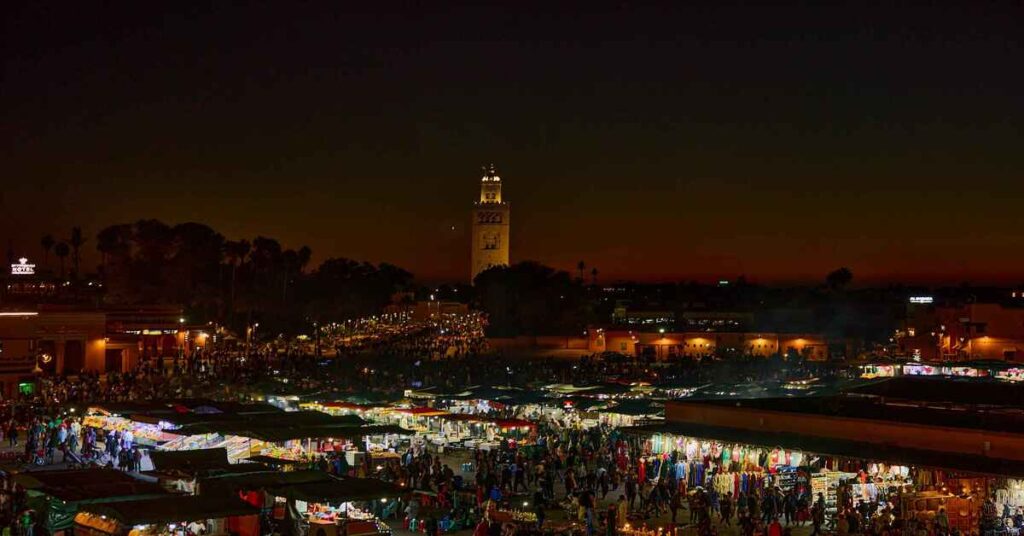
Jardin Majorelle and Yves Saint Laurent Museum
A tranquil oasis in the midst of the bustling city, Jardin Majorelle is a beautifully maintained garden that was once owned by Yves Saint Laurent. The adjacent museum showcases an impressive collection of Islamic art and artifacts.
Bahia Palace and El Badi Palace
Two of Marrakech’s most significant historical palaces, Bahia and El Badi, offer a glimpse into the city’s rich past. Bahia Palace is renowned for its craftsmanship and beautiful tile work, while El Badi Palace, once a grand structure, now stands as a testament to the city’s historical significance.
Koutoubia Mosque and Gardens
The Koutoubia Mosque, with its impressive minaret, is a landmark that dominates the Marrakech skyline. The surrounding gardens provide a peaceful retreat for visitors and locals alike.
Jemaa el-Fnaa Square: Day and Night Experiences
Jemaa el-Fnaa is the vibrant heart of Marrakech, transforming from a bustling marketplace during the day to a mesmerizing spectacle of food stalls and performers at night. It’s an experience that encapsulates the essence of Marrakech.
The Saadian Tombs
Hidden behind a modest entrance, the Saadian Tombs are a masterpiece of Moroccan architecture. Dating back to the 16th century, these tombs are a must-visit for history enthusiasts and those interested in exploring the lesser-known aspects of Marrakech.
Marrakech is a city that has something for everyone, making it an ideal destination for marrakech vacation planning. Whether you’re interested in history, culture, or simply soaking up the atmosphere, Marrakech is sure to leave a lasting impression.
Cultural Etiquette and Safety Tips
As you prepare to explore the vibrant city of Marrakech, understanding the local culture and customs is essential for a respectful and enjoyable trip. Marrakech is a city that thrives on its rich cultural heritage, and being mindful of your behavior and attire can significantly enhance your experience.
Dress Code and Respectful Behavior
When visiting Marrakech, dressing modestly is crucial. Cover your shoulders and knees as a sign of respect, especially when visiting mosques or rural areas. Women should consider wearing a scarf to cover their hair when entering mosques or private homes. Public displays of affection are generally frowned upon, so it’s best to be discreet.
Photography Etiquette
Marrakech is a photographer’s paradise, but it’s essential to be respectful when taking pictures. Always ask for permission before photographing locals, especially in rural areas or when capturing images of people in traditional attire. Some individuals may expect a small tip for posing for photos.
Common Scams to Avoid
Like many popular tourist destinations, Marrakech has its share of scams. Be cautious of overly friendly locals who might be trying to distract you while an accomplice steals your belongings. Be wary of fake guides and always agree on prices before accepting services.
Emergency Contacts and Healthcare
In case of an emergency, it’s crucial to have the right contacts. The Moroccan emergency number is 15, and your country’s embassy can provide additional assistance. Marrakech has several high-quality hospitals and clinics, particularly in the city center. It’s recommended to have travel insurance that covers medical evacuations if needed.
Culinary Adventures: What and Where to Eat
Marrakech is a culinary paradise, offering a diverse array of traditional Moroccan dishes to savor. The city’s cuisine is a rich tapestry of flavors, influenced by its cultural heritage and geographical location.
Traditional Moroccan Dishes to Try
When exploring Marrakech’s culinary scene, there are several traditional Moroccan dishes you shouldn’t miss. Tagine, a slow-cooked stew named after the earthenware pot in which it’s cooked, is a staple. Other must-try dishes include Couscous, often served with vegetables and meat, and Harira, a hearty soup made with tomatoes, lentils, and chickpeas.
- Tagine: A slow-cooked stew made with meat, vegetables, and dried fruits.
- Couscous: A traditional North African dish made from semolina flour, often served with vegetables and meat.
- Harira: A comforting soup made with tomatoes, lentils, and chickpeas.
Street Food Safety Tips
While Marrakech’s street food is tempting and delicious, it’s essential to take some safety precautions. Look for vendors with a high turnover of customers, as this usually indicates that the food is fresh and safe to eat. Avoid eating from stalls that appear unclean or have raw meat exposed.
Recommended Restaurants and Cafés
For a more formal dining experience, Marrakech offers a range of excellent restaurants and cafés. Le Grand Café de la Poste is a historic café serving traditional Moroccan tea and pastries. For a taste of modern Moroccan cuisine, Restaurant Al Fassia is highly recommended.
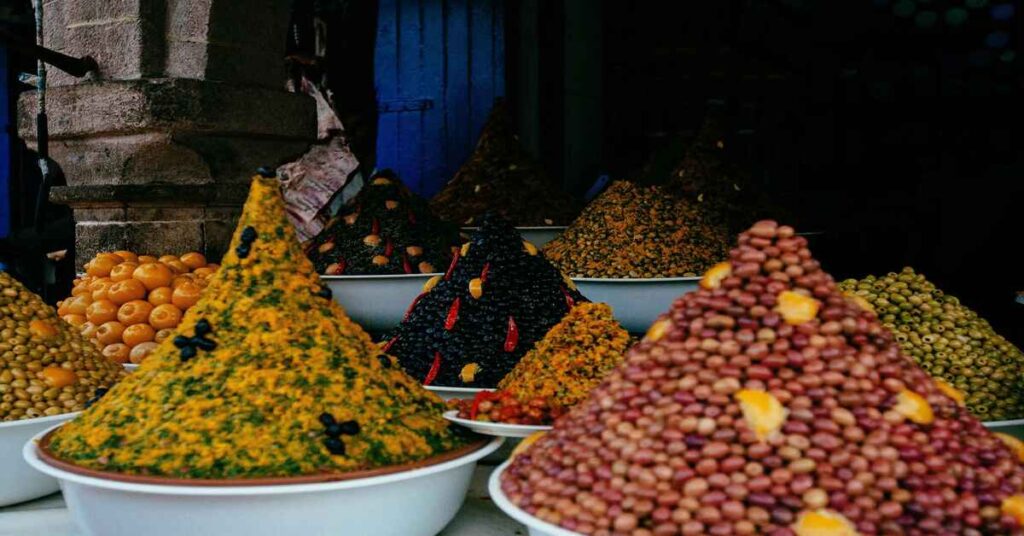
Dining Etiquette and Customs
Understanding local dining etiquette can enhance your culinary experience in Marrakech. It’s customary to eat with your right hand, as eating with your left hand is considered impolite. When dining at a local home or traditional restaurant, be prepared to share dishes and enjoy the communal aspect of Moroccan dining.
By embracing Marrakech’s culinary adventures, you’ll not only enjoy delicious meals but also gain a deeper understanding of the city’s culture and traditions.
Conclusion: Making the Most of Your Marrakech Adventure
As you plan your trip to Marrakech, you’re about to embark on an unforgettable journey. With its rich history, vibrant culture, and breathtaking landscapes, Marrakech is a destination that promises to captivate marrakech first-time visitors and seasoned travelers alike.
From navigating the bustling streets of the Medina to relaxing in a serene riad, every moment in Marrakech is an opportunity to create lasting memories. Whether you’re exploring the Jardin Majorelle, haggling for souvenirs in Jemaa el-Fnaa, or savoring traditional Moroccan cuisine, this city has something for everyone. For the best marrakech tourist information, remember to stay informed about local customs, respect cultural norms, and stay safe.
As you immerse yourself in the beauty and magic of Marrakech, you’ll discover that this city is more than just a destination – it’s an experience. So, take the time to wander, get lost, and soak up the atmosphere. With the right mindset and a little insider knowledge, your Marrakech adventure is sure to be an unforgettable experience.
FAQ
What is the best time to visit Marrakech?
The best time to visit Marrakech is during the spring (March to May) and autumn (September to November), when the weather is mild and pleasant, making it ideal for exploring the city.
How do I get around Marrakech?
Marrakech is easily navigable on foot, and you can also use taxis, ride-hailing services, or public transportation. Be prepared to haggle when using taxis, and consider renting a guide or using a reputable transportation service for a more hassle-free experience.
What are the must-visit attractions in Marrakech?
Some of the top attractions in Marrakech include the historic Medina, Jardin Majorelle, Bahia Palace, El Badi Palace, Koutoubia Mosque, Jemaa el-Fnaa Square, and the Saadian Tombs. Be sure to explore the city’s vibrant souks and try some local cuisine while you’re there.
What should I wear when visiting Marrakech?
When visiting Marrakech, dress modestly and respectfully, covering your shoulders and knees, especially when visiting mosques or other cultural sites. Comfortable shoes are also a must, as you’ll likely be doing a lot of walking.
Is Marrakech safe for tourists?
Marrakech is generally a safe city for tourists, but as with any popular destination, be aware of your surroundings and take necessary precautions to avoid scams or petty crime. Keep an eye on your belongings, and avoid carrying large amounts of cash.
Can I use credit cards in Marrakech?
While many larger businesses in Marrakech, such as hotels and restaurants, accept credit cards, many smaller vendors and souks may not. It’s a good idea to have some local currency, the Moroccan dirham, for these situations.
What are some essential Arabic phrases to know when visiting Marrakech?
Learning a few basic Arabic phrases, such as “hello” (as-salamu alaykum), “thank you” (shukraan), and “excuse me” (afwan), can go a long way in showing respect for the local culture and people.
Can I drink tap water in Marrakech?
It’s generally not recommended to drink tap water in Marrakech. Stick to bottled or filtered water to avoid any potential health issues.
What is the tipping culture like in Marrakech?
Tipping is customary in Marrakech, particularly in the service industry. Aim to tip around 10% in restaurants and cafes, and consider tipping your guides and drivers as well.

